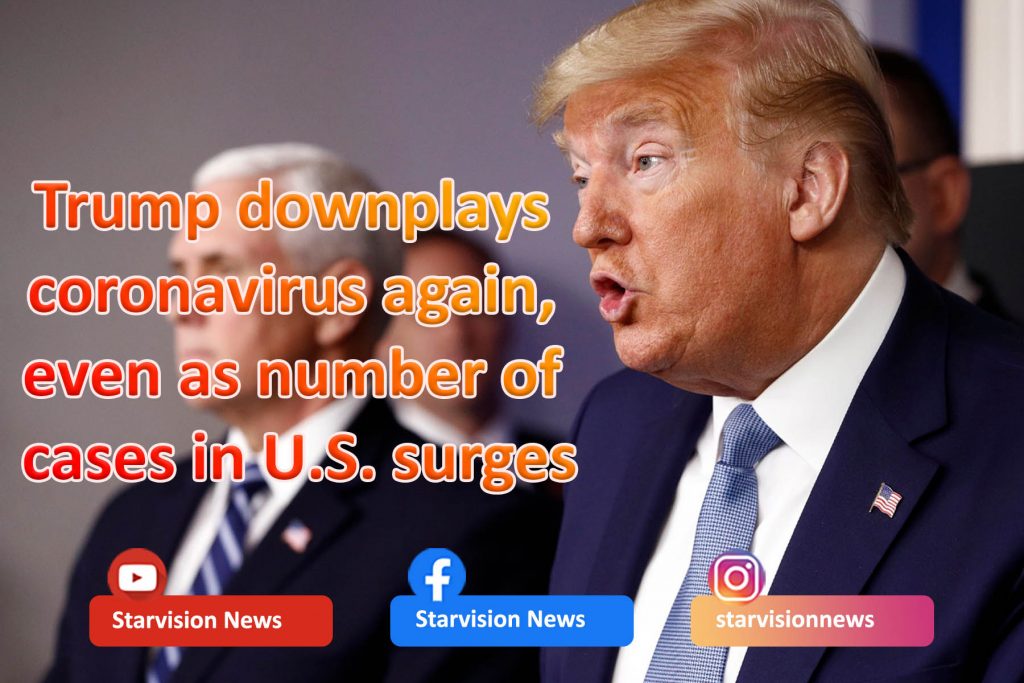US President Trump continued to downplay the exponential spread of the coronavirus in the United States on Monday, comparing the rising death toll to the number of Americans killed in car crashes and by the seasonal flu.
“We have a very active flu season, more active than most,” Trump said at a Monday briefing of the White House coronavirus task force, reverting to how he had described the coronavirus throughout February and early March before he started to take the outbreak more seriously. “It’s looking like it’s heading to 50,000 or more deaths,” he went on, speaking of flu-related mortality.
He then compared the coronavirus outbreak to another killer of thousands of Americans. “You look at automobile accidents,” Trump said, “which are far greater than any numbers we’re talking about. That doesn’t mean we’re going to tell everybody no more driving of cars.” About 39,000 people die in vehicular accidents in the United States per year.
The point seemed to be that, as far as mortality numbers go, the coronavirus was not an especially fearsome killer. By that logic, effectively shuttering whole swaths of the economy, Trump said, made little sense.
“We have to do things to get our country open,” Trump said, calling the last several weeks “an incredible period of learning.” He did not say what was learned, or by whom.
The growth trajectory of the disease over the last several weeks has continued to cut a devastating swath across the nation. There are now more than 43,000 confirmed cases of COVID-19 in the United States, and there have been more than 530 deaths.
Yet Trump’s views on the virus seem to have changed. On Monday he appeared swayed by the argument that the economic cost of attempting to halt the coronavirus through lockdown measures is greater than the human cost of letting it cycle through the population.
A laissez-faire approach to the coronavirus could kill as many as 2.2 million Americans, according to estimates. That number is believed to have spooked Trump and other White House officials into taking the outbreak more seriously.
But just eight days after his own Centers for Disease Control and Prevention issued 15-day guidance that (when they have been implemented properly) severely restricts economic and social activity, Trump appears to be growing restless with it. The stock market has continued its downward slide, while Congress has been unable to come up with an economic package that could restore confidence.
And so on Sunday night, Trump signaled his renewed skepticism about the coronavirus. “WE CANNOT LET THE CURE BE WORSE THAN THE PROBLEM ITSELF,” the president wrote on Twitter, adding that the CDC’s guidance would be reevaluated when the 15-day period was through. Most public health officials believe that measures like social distancing and teleworking should continue for weeks, if not months, to come.
Trump’s surrogates increasingly disagree. “Let’s see how this thing plays out,” said White House economic adviser Larry Kudlow on Fox News. Kudlow, who has downplayed the severity of the coronavirus epidemic, is known for a history of egregiously incorrect economic predictions, including about the 2007 subprime mortgage crisis, which he depicted as an “economic cleansing.”
By the time Trump arrived at the White House briefing room on Monday, he was clearly on Kudlow’s side. “We have to get moving,” the president said.


